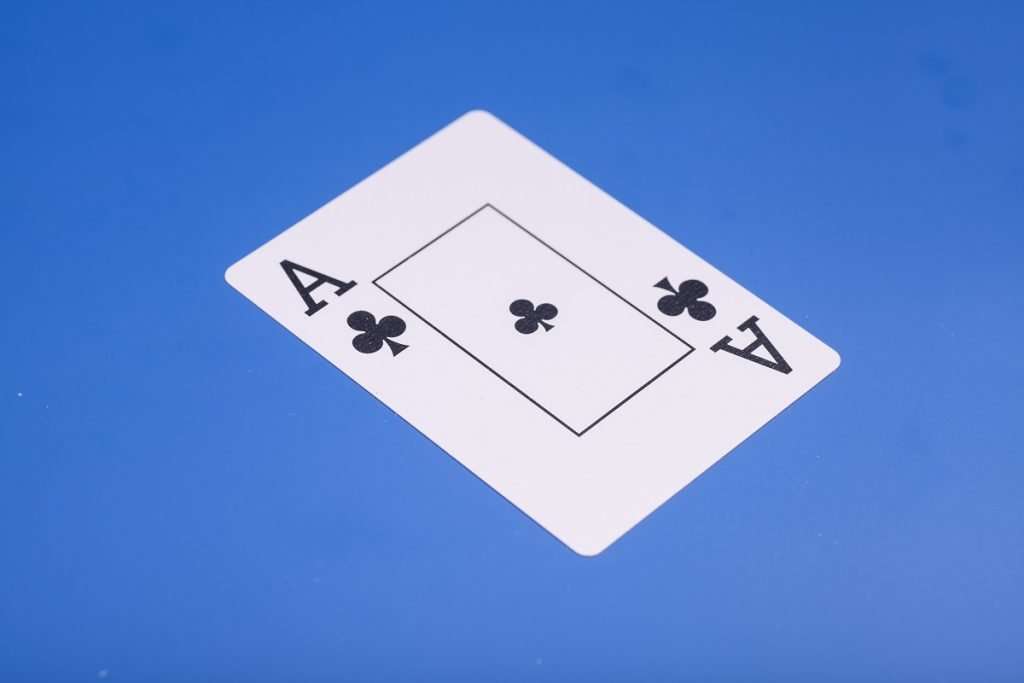Investing, and money, is absolutely NOT one size fits all. Ask someone how to invest $100k, and you’ll get a different idea (or 10). Like fitness and diet, everyone has their own special way of doing it that works for them.
So instead of bombarding you with more useless ideas, why don’t we try to solve the blessing of having $100k to invest with some basic personal questions/ reflections.

Sure it takes a little more effort, but it’s better than blindly following someone’s idea and giving up on it before it can make you a good return.
What does $100k mean to you?
Again this sounds a little woo-woo, but it’s very important in deciding how to invest the $100k. You should ask yourself:
- How much money do you make
- How much money do you have saved
- How frequent will you invest a similar sum
- When do you anticipate needing the money
This is very important, because not only does it help you determine your goal for the money but it can also identify your risk tolerance.
For example, someone who makes $25,000 a year with no savings and received the $100k as an inheritance will have a much different view on the money than someone who brings in $1,000,000 per year and is looking to invest $100k every 6 months.
The person with the inheritance might be much more conservative with their money than the person who makes $1 million/year, because that sum of money means more to them and their overall financial situation.
The Very Definition of Investing is RISK
Before we move on further, and I’ll give you practical examples to implement depending on how you answered the questions above, it’s important to set the stage on why risk tolerance is so key to identify.
The concept of investing money is putting it at risk to make it grow.
Two of the most common ways of investing are through debt or equity– in other words, putting it into a business or lending it out to someone.
When you lend money to someone, you expect to get the money back over time with interest attached. The risk there is that the person defaults on the loan and is no longer able to make the payments.
When you invest money into a business, you help a business purchase inventory or tools to help them create a profit. As an investor in a business, you earn part ownership of those future profits. The risk here is the business going bankrupt, or shrinking so much that profits become terribly low.
You MUST understand that with investing there is no such thing as a free lunch. Every investment is risky.
There’s so many clever names for different techniques, but at the end of the day every investing strategy has risk built in. That’s the only way it can even have the potential of making your money grow.
So you need to choose how much risk you are comfortable with, and how you are going to leverage your knowledge and abilities to take advantage of the opportunities presented to you in spite of those risks.
Determining Your Investment Time Frame
This is key before anything too. If you need your $100k in 3 years, it makes no sense whatsoever to lock into a 10 year bond where you can’t access the money when you need it.
If you are wanting to buy stocks or bonds, don’t even think about investing your $100k unless your time frame is at least 5 years, perferably 10-20+.
These markets (stocks and bonds) simply move up and down like the economy does, and your results can vary greatly ESPECIALLY if you try and invest in these instruments in shorter time periods.
It’s like playing a game where your odds are 60-40. If you play just once, you could still lose. But if you play over and over, your chances get better and better.
So, if you’re just looking to invest for less than 5 years, just park it in a CD (explanation here) or high yield savings account like one from Ally Bank.
Otherwise, you could be playing a losers game where your risk and potential reward are equally high.
3 Types of Risk Tolerance and 3 Practical Strategies
Let’s go back to those questions at the top and come up with 3 risk tolerance profiles and 3 practical ways to go about investing in those ways.
If $100k is ALOT of money compared to what you make or have saved, your risk tolerance is probably low.
If $100k is a lot but you are young, you could have a medium to high risk tolerance. If you don’t have much saved so $100k is a lot but you make a high income, you may want to consider medium or high risk.
A high risk tolerance falls more towards the other extreme of the example, the very high income earners or those with lots of money already. It could also be someone who so desires wealth that he would be fine with taking big risks to get there.
Low Risk Tolerance: This is someone who probably would panic at the sight of their investment going down in value, whether temporary or not.
This person should NOT be in stocks and probably not bonds and should consider traditional interest baring vehicles such as CDs, savings accounts, or TIPs.
You could look into annuities, whole life policies, or other ultra low risk investments. I don’t necessarily endorse these types of options (I’d prefer TIPs if it were me) but I understand that my cup of tea isn’t for everyone.
Medium Risk Tolerance: Here’s someone who might be okay with putting money at some risk, while understanding the value of doing so prudently.
Bonds can be a fantastic option for this type of investor, especially because the only risk of loss of capital is if the company defaults.
A bond is simply a loan to a company. If you spread out your $100k between several strong companies, you can really reduce the risk of losing money with your investment. You can buy these individually or buy a bond ETF which buys a basket of bonds for you.
Bonds are outside the scope of this website (for now), so if you’re interested in taking that route you can click on the links I provided above.
Someone with medium risk tolerance can also be a great candidate for investing in the stock market.

Buying stocks switches you away from being a lender and towards having part ownership in a big business. The value of that ownership stake (the stock) will fluctuate as time goes on especially on Wall Street, but many businesses grow over time and can be fantastic investments.
If that part intrigues you, be sure to read on…
Medium-to-High Risk Tolerance:Some classic investment options in this bracket include stocks, high yield “junk” bonds, real estate, REITs, mutual funds and index funds, among others.
This is where it gets really fun.
What potential investors should know at this stage are some simple facts that make some of these options attractive (or not).
The stock market as a whole has averaged 10% a year for decades, since the early 1900’s. That’s not a typo. Yes, many studies confirm this finding over almost 100 years.
This is basically because businesses continue to innovate and create better products and services over time. You can buy stocks and become a part of this prosperity.
You have to be careful, now.
From here, you could go a million places and venture into a million slivers of the stock market.
Let me just say this first and for all.
The world of investing is a CRUEL and UNSYMPATHETIC place. It DOESN’T care about your $100k. In fact, ONLY YOU care. That means it’s your responsibility to place it for great chances of success. That means you MUST LEARN how, and be SMART about who you listen to and WHAT YOU DO.
That being said, you won’t learn the best investing strategy overnight and there’s no rush to.
An ideal investment situation is one that can continue indefinitely, where it pays you a growing income stream as it grows in value too. This can be achieved in the stock market, but only if you’re smart about how you try to do it.
I wrote a 7 step guide to understanding the stock market that I highly recommend you go read.
It starts with the various investment options and goes more in-depth into things like real estate, gold, and p2p lending. Then it teaches you about how the stock market operates, which is vital to being successful in it. Then it takes you through how exactly to get started and what to focus on.
I can’t emphasize this enough, make sure you educate yourself deeply before throwing $100k around in any old investment.
Take your time and give yourself a reasonable deadline– maybe a month or 3 months to digest everything you can about investing– and then after that go ahead and pull the trigger with confidence. You’ll sleep so much better.
Speaking of pulling the trigger…
Insane High Risk Tolerance: Maybe you’re someone who wants to turn $100k into $100 million in 30 days, or won’t rest until you’re a billionaire.
If that’s you I can’t help you. I’ve actively been in the market for over 6 years and have never observed a reliable way to do this. Unfortunately, most wealth is built the old fashioned way. And the ones who don’t go this way usually get lucky and aren’t able to repeat that luck.

If you’re trying to flip that $100k, good luck. You can try your hand at options, forex, crypto, or Bitcoin, or even Vegas or the horse track.
For me, I’m going to do it the old fashioned way.
Like the tortoise plodding along, my wealth has been growing as I collect more and more ownership stakes in more great businesses. It’s the non-glamorous part of the stock market, but it’s likely to beat the hare.
Related posts:
- The 8 Main Types of Investment Risk “If you’re not willing to react with equanimity to a market price decline of 50% two or three times a century, you’re not fit to...
- A Guide to Investing for Beginners— Your Path to Financial Freedom “Investing is the process of laying out money now to receive more money in the future.” Warren Buffett Most people think they need thousands or...
- Series I Bond Guide: How to Buy One and What Returns to Expect Updated 3/24/2023 Today’s historically low interest rates drive many investors to search for better returns than banks offer today. Many of us looking for safe...
- Investment Terms Everyone Should Know Updated 9/3/2023 If you are new to investing, all the terms and jargon might seem overwhelming. But today’s post will help you learn some of...
